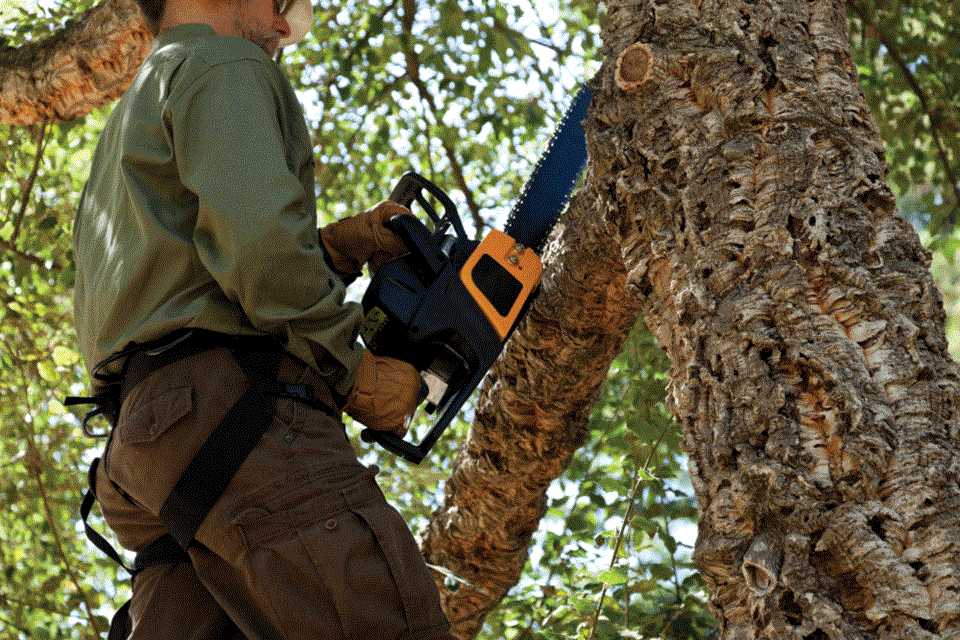With winter appearing to wind down a little earlier than usual this year, crews pruning and trimming trees have become a common sight in neighbourhoods throughout the Energy City.
Rod March, parks manager with the City of Estevan, said all of the work currently taking place on trees around the city is being done by SaskPower. He noted that the city has plans for local trees to take place later, in the spring and summer.
“What you’re seeing right now is SaskPower keeping their lines clear,” said March. “They’re trying to do that in the month of March, before the elm ban comes on, in April.”
March said that as the temperatures warm up, the city will be keeping an eye on the condition of local trees. He said two of the main concerns with trees this coming spring and summer include Dutch elm disease and black knot fungus.
March said that black knot fungus, a disease that effects trees in the prunus genus, is “all over the city right now,” with Mayday and cherry trees being the main local victims of the disease.
“We have some city crews that are tackling it from the east to the west, before temperatures get too high and the spores are released,” March said.
This year, the city is handling cases where trees are afflicted with two, three, and in some cases, four years of fungal growth. It is necessary to identify and treat the problem in its first year, because if the fungus isn’t treated and stopped, it will spread to other parts of the affected tree, and eventually, to other trees. It’s for that reason that March advised residents around the city to look for signs of the disease on trees on their property.
Signs of black knot fungus include green or light brown wart-like bumps on new growth on the tree. These bumps are actually signs of swelling, and will eventually grow, darken and harden.
“That’s the first year of the fungus,” said March. “What people typically see is the growth in years two, three and four, that hasn’t been dealt with. That’s why, at that point, you see long ropey black knots.”
March said that by the time trees exhibit black knots, they are usually past a point where they can be salvaged. However, in some cases, affected areas can be pruned, and the tree saved.
Pruned limbs must be buried or burned, to properly remove the fungus, because once the spores are released from the mould, they are transported by the wind to new trees.
A press release from the City of Estevan says to remove limbs with a bleach-sterilized tool, by cutting the limb at least 15 cm toward the stem, from the point of infection.
The release advises that all waste debris be burned or buried immediately after removal. If there is an infection on a main stem or scaffold branch, the release advises to cut 2 cm beyond the edge of the infection.
The best time to prune is during the dormant season, which includes fall, winter and spring. The fungus is easily visible at those time. Chemical treatments are considered limited in scope and are not recommended for mitigation, since they are preventative measures to limit the fungus’ spread.
“There will be some casualties. I’m taking down trees now, because they’re so far gone,” said March. “The fungus surrounds the cambium, the cell tissues of the tree, (in what is called) girdling. In time, it goes around the cambium and cuts off water and nutrients to the tree.”
March noted that such a process kills the tree over the course of several years, if left untreated. The process involves deformity of the tree, with branches eventually falling off once they’re completely girdled. When the fungus eventually reaches the main trunk, and girdles that, the tree will die.
“You still have an opportunity to save the tree if it’s not fully girdled,” said March.
The city will also be implementing a city-wide survey for trees affected by Dutch elm disease this spring, before April. This involves the pruning and removal of several trees in the community that are affected by the disease.
“It’s mostly the American elm that’s affected by Dutch elm disease,” said March. “We did have a couple of them removed last year.”
March said that while he is taking down infected trees, he’s developing an urban forest enhancement program to replace them.
“We’re looking at trees nearing their lifespan and getting ready for those, too,” said March. “I will end up underplanting those with a secondary species. As the older species get older and die, there will be newer, more vibrant and healthy trees coming up under them.”
July is the best time to start looking for signs of the disease, because symptoms usually don’t appear until then.
“Basically, I look at every elm tree, looking for specific symptoms, which are bigger top branches that are turning yellow, and branches that fall off with yellow leaves,” said March. “What’s happening is the fungus of the beetle is cutting off water transportation inside the tree.”
March said he takes samples from trees that appear to be showing symptoms of the disease, and tests them in a lab, adding that,“if it comes up positive, we’ve got to remove that tree. Last year, we did have a couple of trees with symptoms, but they came back as negative, so we were good that way.”
March encouraged anyone with questions about either disease, their trees or any of the concepts related to that subject, to contact him with those questions.




